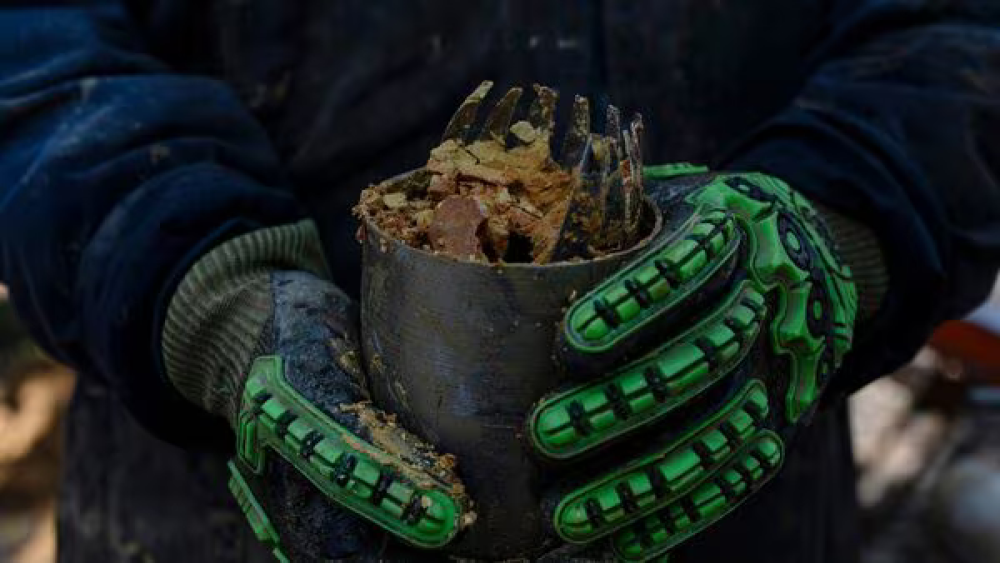
Ấn Độ lên kế hoạch tự chủ nam châm đất hiếm: gắn ưu đãi với nguyên liệu nội địa để thoát Trung Quốc
-
Ấn Độ dự kiến áp dụng mô hình hỗ trợ theo “tầng” trong chương trình phát triển nam châm đất hiếm, với mức ưu đãi cao nhất dành cho doanh nghiệp sử dụng oxit đất hiếm nội địa.
-
Trung Quốc hiện kiểm soát 60% khai thác đất hiếm toàn cầu và 90% nguồn cung, đã áp hạn chế xuất khẩu từ tháng 4/2025, ảnh hưởng tới nhiều ngành: bán dẫn, điện tử, năng lượng tái tạo, quốc phòng và ô tô.
-
Ấn Độ đã công bố chương trình hỗ trợ trị giá ₹1.345 crore (≈161 triệu USD), có thể nâng lên trên ₹5.000 crore (≈600 triệu USD) để thúc đẩy sản xuất nam châm vĩnh cửu trong nước.
-
Nhu cầu nam châm đất hiếm tại Ấn Độ được dự báo vượt 7.000 tấn vào năm 2030, chủ yếu từ xe điện và tự động hóa công nghiệp (theo Primus Partners).
-
Chính phủ cân nhắc ưu đãi cao hơn cho sintered magnets (dùng trong MRI, tua-bin gió, cảm biến hàng không – vũ trụ) so với bonded magnets (máy in, đồ chơi chạy pin).
-
Ấn Độ có trữ lượng 7,23 triệu tấn oxit đất hiếm nhưng chỉ có công ty nhà nước India Rare Earths Ltd đang tinh chế.
-
Các sáng kiến quốc tế:
-
Tháng 7/2025, Ấn Độ cùng Mỹ, Úc, Nhật khởi động Quad Critical Minerals Initiative nhằm đa dạng hóa chuỗi cung ứng.
-
Thành viên Mineral Security Partnership từ 2023, liên minh với Mỹ, EU, Nhật, Hàn và nhiều nước khác để huy động đầu tư cho khai thác – chế biến – tái chế.
-
-
Các chương trình hỗ trợ công nghiệp khác ở Ấn Độ (như xe điện, pin) yêu cầu ít nhất 50% nội địa hóa. Chính sách mới với oxit đất hiếm được xem là chìa khóa tránh phụ thuộc nhập khẩu.
-
Attero Recycling (Ấn Độ) đã sản xuất oxit và sẵn sàng mở rộng sang sản xuất nam châm trong vòng một năm. CEO Nitin Gupta cảnh báo nếu chỉ tập trung sản xuất nam châm mà không nội địa hóa oxit, Ấn Độ có nguy cơ gặp khủng hoảng nguồn cung tương tự trong tương lai.
📌 Với nhu cầu nam châm đất hiếm vượt 7.000 tấn vào 2030 và Trung Quốc nắm 90% nguồn cung, Ấn Độ chuẩn bị chương trình hỗ trợ trên 600 triệu USD, gắn ưu đãi với nguyên liệu nội địa. Trữ lượng 7,23 triệu tấn oxit trong nước cùng hợp tác quốc tế (Quad, MSP) sẽ giúp giảm phụ thuộc Trung Quốc. Tuy nhiên, thành công phụ thuộc vào việc phát triển đồng bộ tinh chế oxit và sản xuất nam châm.
https://www.livemint.com/news/india/india-rare-earth-magnet-incentives-linked-local-sourcing-pli-11755415605619.html
India may choose a tiered path to rare earth self-reliance
Manas Pimpalkhare , Rituraj Baruah 3 min read 18 Aug 2025, 10:12 AM IST
India's demand for rare earth magnets is likely to rise above 7,000 tonnes by 2030. (Bloomberg)
India's demand for rare earth magnets is likely to rise above 7,000 tonnes by 2030. (Bloomberg)
Summary
Government is considering a tiered structure for the new rare earth magnet scheme. Here's how that may work.
Gift this article
New Delhi: India may link incentives aimed at spurring rare earth magnet manufacturing to the level of local materials used as the government seeks to counter China’s supply curbs, according to two people aware of the development.
The government is considering a cascading localization provision for sourcing rare earth oxides, the people said. They spoke on the condition of anonymity as the scheme is still being finalized.
Levels or tiers are under consideration, said the first person quoted earlier. “This means whoever sources their raw material for processing from India, domestically, they can get higher incentives."
The ministries of heavy industries, and mines have not finalised the scheme draft yet, the second official said.
Queries emailed to the two ministries on 14 August remained unanswered.
China, which controls about 60% of global rare earth mining and 90% of supply, imposed export restrictions in April, affecting supplies to sectors such as semiconductors, electronics, renewable energy, defence, and automobiles. India’s ₹1,345-crore scheme, announced by Union heavy industries minister HD Kumaraswamy, aims to incentivize the processing of rare earth oxides into permanent magnets within the country.
Also read | Out of rare earths, India’s automakers turn to old tricks and new tech
India's demand for rare earth magnets is likely to rise above 7,000 tonnes by 2030, driven by electric vehicles, according to a report by consultant Primus Partners published this month. “...This dependency represents a strategic vulnerability, especially as rare-earth magnets are critical not only to EVs but also to industrial automation, electronics, renewable energy systems, and defence applications."
The government’s plan to link disbursal to a formula, offering the highest incentives to manufacturers to fully source oxides domestically, comes as, according to media reports, it is set to increase the outlay to over ₹5,000 crore to draw more interest from the industry.
The incentives for sintered magnets, which are used in more critical applications such as MRI machines and surgical devices, electric motors, wind turbines, and in high-performance sensors and devices for planes and satellites, are expected to be higher than bonded magnets used in printers, copiers, battery-operated toys, among others, the second person quoted earlier said.
India has 7.23 million tonnes of rare earth oxides, the government informed Parliament on 23 July. But state-run India Rare Earths Ltd is the only refiner of the critical mineral in the country.
Also read | The Arabian Sea is calling, and this time for rare earths
India, along with the US, Australia, and Japan, announced a new Quad Critical Minerals Initiative in early July to strengthen and diversify supply chains as a veiled response to China’s export control order.
In June 2023, India became a member of the US-led Mineral Security Partnership, which also includes Australia, Canada, Finland, France, Germany, Italy, Japan, Norway, the Republic of Korea, Sweden, the UK and the European Commission. MSP seeks to bolster critical minerals supply chains and ensure that these ores are produced, processed and recycled by catalyzing investments from governments and private sector across the full value chain.
Previous central government schemes to support domestic manufacturing capabilities also had stringent localization rules. Production-linked incentive schemes run by the heavy industries ministry for zero-emission vehicles, their components, and batteries require at least 50% local raw material and components to qualify.
The focus on local sourcing of oxides is important because, like magnets, India and other markets are dependent on China for them as well, according to Nitin Gupta, chief executive officer and cofounder, Attero Recycling, an e-waste and lithium-ion battery recycling company. The company, which already produces oxides, says it will be ready to set up magnet manufacturing capacity within a year.
“If we develop rare earth magnet manufacturing capacity, but not the local oxide production, then we may face a similar supply crunch in the case of oxides also in the future," he said. “Hence, the focus on local sourcing of oxides under the scheme being prepared."
Also read | India's rare earths riddle: No quick fix as China holds the magnetic key
Gift this article
Read Next StoryfootLogo
premium
News
Former Kae Capital partner Natasha Malpani launches ₹200-cr fund for new AI startups
Priyamvada C 2 min read 18 Aug 2025, 06:00 AM IST
Natasha Malpani, founder of Boundless Ventures
Natasha Malpani, founder of Boundless Ventures
Summary
The fund, which has already made four investments, will invest in the pre-seed and seed stages and its focus spans from consumer AI, AI infrastructure, agent tooling to vertical AI applications in sectors like healthcare and logistics, and make-in-India hardware and deeptech.
Gift this article
Mumbai: Natasha Malpani, a former partner at Kae Capital, has launched Boundless Ventures, a ₹200 crore early-stage venture capital fund to back Indian AI (artificial intelligence)-native startups at the intersection of science, systems and identity.
The fund, which has already made four investments, will invest in the pre-seed and seed stages, and its focus spans from consumer AI, AI infrastructure, agent tooling to vertical AI applications in sectors such as healthcare and logistics, and make-in-India hardware and deeptech.
“The first cheque size ranges between $200,000 and $400,000 with reserves for follow-ons and the maiden fund will make 20- 30 investments," Malpani, founder of the firm, said in an interview with Mint. Launched earlier this year, the investor mix includes friends, family and personal capital.
Also Read | IndiGo's flight plan for innovation: A ₹450 crore fund to back startups
The companies invested include SuperHealth – a healthcare delivery startup, Armatrix focused on last metre industrial automation, Piersight – a startup that operates in real-time ocean intelligence via satellites and Knot – an AI-native fashion discovery and logistics platform.
The rationale for these investments is multifold. Malpani explained that it depends on the business model, product, and the industry they operate in. “There are some categories where one needs to show some monetization to prove that there is an addressable opportunity. But there may also be some industries in AI verticals where it takes a long time, and you have to look for other proof points such as technical depth and adoption velocity," she said.
In her previous role, Malpani led Kae Capital’s generative AI thesis and was involved in companies such as Knot, eXlens.ai, Grapevine/ Round1, Supernova, BPR Hub and Fondant.
Also Read | Generalist VCs want a slice of deeptech. But will they weather the slow burn?
Malpani said this is the moment to create a pool of capital to catch the AI disruptors early, as there aren’t that many funds specializing at this stage. “The whole ecosystem is so young. There is a need for funds to specialize in AI as the market is moving rapidly. If one isn't keeping track of what's happening, they could be very quickly left behind, both from an investor as well as from a founder’s perspective," she said.
“India is not just catching up, it’s compounding. Talent, infra, and demand are aligning, but founders need conviction capital now. If we don’t move early, we risk losing the window for India to build AI for the world."
Boundless joins the growing list of other early and mid-stage venture capital funds such as Tenacity Ventures, Stellaris Venture Partners, India Quotient, Prime Ventures, Accel, A91 Partners, Cornerstone VC and Bessemer Venture Partners that have launched new funds in recent months, underscoring a revival in the fundraising momentum.
Also Read | This VC firm is striking gold, reaping $11 billion from Figma, other startups
Broadly, specialized venture funds focusing on emerging niches have risen in India as they compete with larger sector-agnostic peers, in a sign of growing maturity in the country’s startup funding ecosystem.
Last year, Mint reported that several specialized funds have sprung up in sectors such as prop-tech, supply chain, media-tech, STEM and climate-tech. While such strategies have existed in the Indian investment landscape for some time, they are increasingly coming to the fore as investors seek to make more focused bets on sunrise industries to maximize returns.
Gift this article
Read Next StoryfootLogo
premium
News
From reach to resonance: Advertisers chase attention, not inventory
Gaurav Laghate , Suneera Tandon 3 min read 18 Aug 2025, 05:40 AM IST
The problem is most visible with younger audiences. Gen Z users scroll quickly, often skipping ads before they even load. “Gen Z doesn’t hate ads. (istockphoto)
The problem is most visible with younger audiences. Gen Z users scroll quickly, often skipping ads before they even load. “Gen Z doesn’t hate ads. (istockphoto)
Summary
As marketers move beyond impressions, attention emerges as the new metric for effectiveness. Agencies and brands are adapting to a world where visibility is no longer guaranteed—and neither is impact.
Gift this article
Mumbai: Former WPP chief Martin Sorrell didn’t mince words earlier this year when he said, “It’s ludicrous that 250,000 people are still working in media planning and buying when all of that can—and will—be done algorithmically." At an industry event, he added, “You won’t rely on a 25-year-old media planner. You’ll rely on an algorithm."
Sorrell was not just sounding off. His remarks reflect a broader shift already reshaping marketing playbooks, moving away from media weight and toward measuring attention.
For years, marketers counted what they bought. Now, they are asking what was actually seen, and what effect it had.
Also Read | Pondy's French citizens return home, GenZ and fake weddings & other great reads
From exposure to effectiveness
At Godrej Consumer Products Ltd, that shift is already under way. “What I care about is not how much time she (consumer) spends on a medium, but when I advertise in that medium, how much visibility I get for my advertising. That’s where efficiency lies," said Ashwin Moorthy, the company’s chief marketing officer for India.
Godrej has brought media planning and creative work in-house. Its own allocation tool, called Mash, tracks outcomes, not just output. “Now it’s about owning outcomes," Moorthy said. “If a brand doesn’t do well, the creative team here tweaks it immediately. They care about what happens after the ad is on air."
Moorthy said the real advantage is speed. “You’re not wasting two months negotiating with agencies. You’re spending that time creating work."
The message is clear. Buying inventory is no longer enough. Nor is waiting on brand recall surveys.
Agencies under pressure
Advertising agencies are reacting. At WPP, attention has become a central metric, said Amin Lakhani, president of client solutions at WPP Media South Asia. “We’re not just selling media anymore. We’re selling growth," he said.
Lakhani said attention scores are embedded into WPP’s audience tools. These are used to determine which formats and placements lead to actual engagement. “It’s about measurable interest. If a consumer scrolls past without noticing, that’s not media. That’s waste," he said.
Also Read | Massive rise in betting ads: A call for vigilance
WPP is also investing in modular creative work. Formats are adjusted for different audience types based on real-time behaviour. “One format won’t work everywhere anymore," Lakhani said.
A generation that scrolls
The problem is most visible with younger audiences. Gen Z users scroll quickly, often skipping ads before they even load. “Gen Z doesn’t hate ads. They just ignore most of them," said a senior media buyer at a global agency, speaking on condition of anonymity.
She said many clients no longer ask how many people saw their ad. They ask how many watched it with intent. “That’s now a standard question in reviews," she said. “Especially from tech and FMCG brands."
The shift is straining agencies that still operate on volume-driven models.
Attention over inventory
Sorrell, now executive chairman at S4 Capital, believes the cost of planning and creative will continue to fall. AI will accelerate that. “In just one campaign, we might produce 1.5 million assets for a client like Amazon," he said. “With AI, you can do 10 times that. But only if you charge per asset, not per hour."
Sorrell predicts flatter agency structures and more client control. “Most agencies don’t want to share data or lose control. But control is already lost. The client has it," he said.
To him, media today isn’t about presence. It’s about performance.
Reshaping the chain
Moorthy at Godrej said the decision to go in-house was driven by accountability. “If it’s your own people, they care if something fails. They tweak it fast. You can’t afford to wait for an agency debrief."
WPP is also moving towards what it calls “attention-to-outcome" planning. According to Lakhani, many brands now use attention data to tweak campaigns in-flight. “If it’s not working, we kill it fast. That wasn’t the case even two years ago."
Tejinder Gill, managing director at digital marketing company The Trade Desk India, said advertisers are beginning to recognise that visibility alone is not enough. “We’re seeing fatigue among consumers who are bombarded with repetitive ads," he said. “It’s not about visibility alone. It’s about resonance."
Also Read | Smaller FMCG players in India growing faster than big FMCG companies: Report
He said brands need better signals across platforms. “By tapping into omnichannel insights, brands can adjust creative and frequency in real time, not after the campaign is over," Gill said.
From reach to recall
Billions of digital impressions are logged each month in India. But if fewer than half are seen, what is the actual return?
“You might be on the world’s biggest platforms. But if no one notices your ad, what’s the point?" Moorthy asked.
Lakhani echoed the concern. “We’re reworking our entire stack to measure interest, not inventory," he said. “That’s where clients are headed. We have to be there before they ask."
Sorrell’s comments may have sounded like provocation, but across India’s ad industry, they are beginning to look more like a prophecy.
Thảo luận
Follow Us
Tin phổ biến



